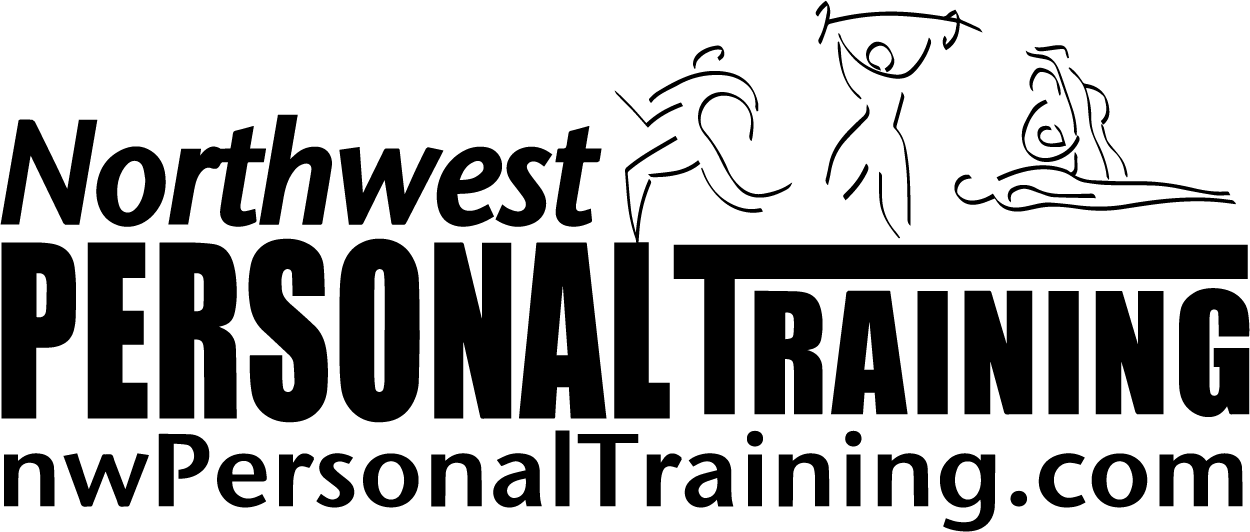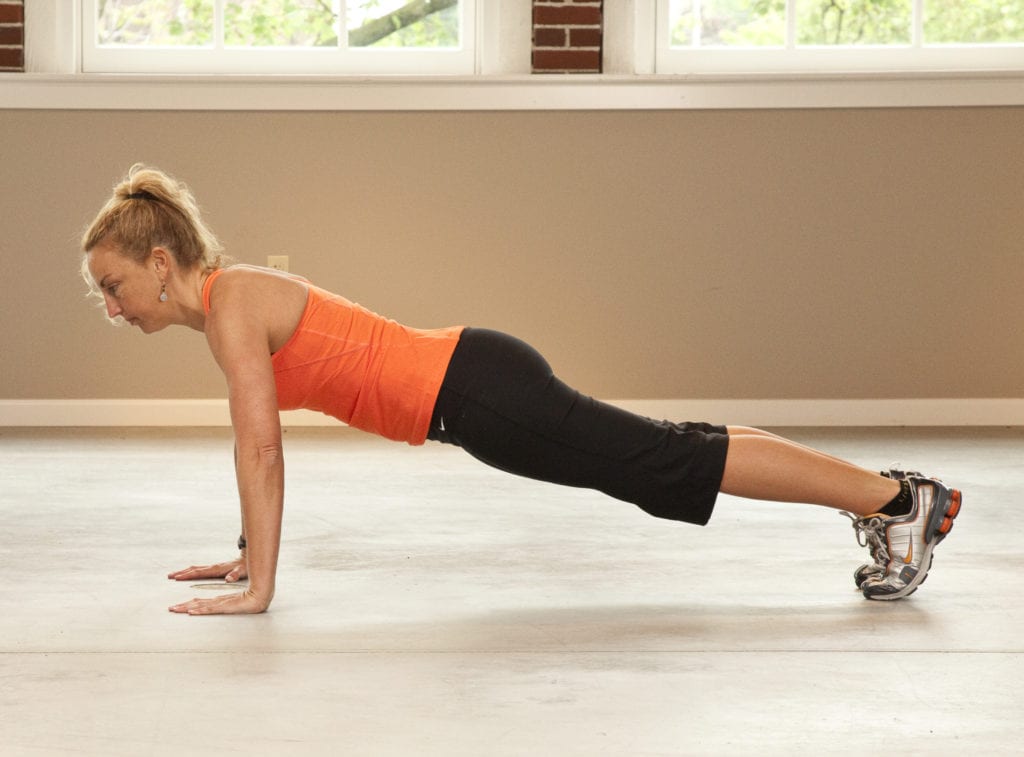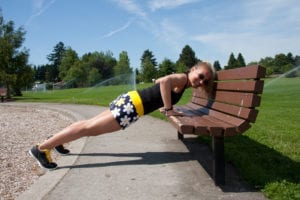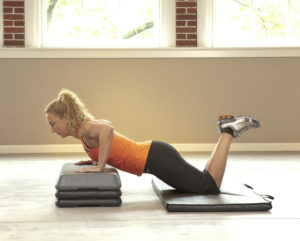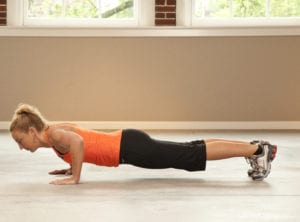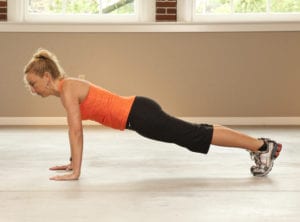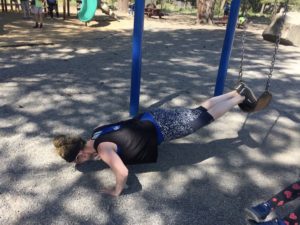Regardless of age or fitness level, we could all benefit from the ability to push against and support our own body weight.
In fact, longevity has been linked to our ability to transition from the floor to a standing position which involves the ability to push.
Pushups, a standard upper body exercise, work many muscles in your body including your chest, shoulders, triceps, core and hips.
There are numerous health benefits to the pushup exercise including:
Pushups are an exercise you can do anywhere
Pushups do not require any equipment or a gym membership
Pushups are multi-level and can offer many options and variations for all exercisers
Pushups develop muscular strength and endurance
Pushups strengthen your core stabilization
Pushups can improve your sports performance
When most people think about pushups however, they think about advanced, full military style pushups with perfect technique. Not many can execute in that manner.
It’s important to understand the step-by-step process for building the strength to be able to perform a full pushup:
Wall Pushup
If you’re just getting started with pushups, try wall pushups.
Place your hands on a wall a few inches wider than shoulder width apart and in line with your shoulders.
Position your feet away from the wall.
Now push away from the wall and slowly return towards the wall keeping your feet in the starting position.
This approach uses less of your body weight so it’s a great place to start.
Incline Pushup
As wall pushups become too easy, advance the exercise by positioning your hands on a bench or couch.
It’s a more challenging angle than the wall, but not as challenging as the floor.
Pushups (Knees)
As Incline pushups become too easy, advance the exercise by starting from the floor.
Lie on your stomach with your knees bent and feet lifted off the floor towards your hips.
Position your hands on the floor a few inches beside your shoulder.
Make sure that your elbows are directly over top or to the inside of your wrists.
Keep your abdominals contracted and your back in its neutral position.
Now slowly push up, then slowly return to the starting position.
Negative Pushups – Knees on the concentric (up) / Toes on the eccentric (down)
Once knee pushups become too easy but you’re not ready for full pushups, opt for negative pushups.
This means that you’ll push upwards from the knee position, but then lift the knees and lower from your toes position.
This has you positioned on your toes during the least challenging phase of the movement, and on your knees during the most challenging phase.
Pushups (Toes)
Lie on your stomach with your legs straight and toes in contact with the floor. Position your hands on the floor a few inches beside your shoulder. Make sure that your elbows are directly over top or to the inside of your wrists. Keep your abdominals contracted and your back in its neutral position. Now slowly push up, then slowly return to the starting position.
Decline Pushups
An advanced option is to place your toes on top of a bench, stability ball or chair during the down-phase of a pushup.
Some important tips:
Be sure to keep your back straight and elongated
Keep your neck neutral during the pushup so you are typically looking down (except during the wall pushup)
Try to use a count of 1-2 counts on the up-phase and 2-4 counts on the down-phase
Always engage the core muscles
If you have a shoulder impingement issue, pushups may not be the best choice for you. Consult with your physician if you are experiencing shoulder pain.
Start with the variation that currently works best for you and complete 1-3 sets of 8-20 reps, 2-3x/week
Yours in health and fitness,
Sherri McMillan
